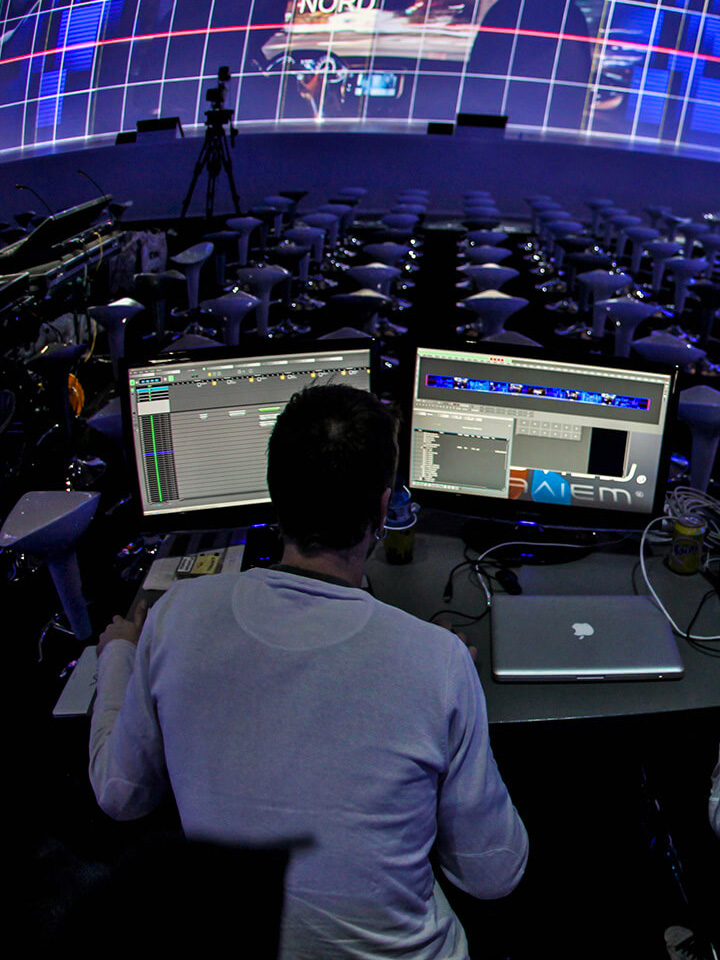Every project starts with an analysis of the site and the “technical concept”. In order to better understand the project, the whole team spends a few days on site: it is only by studying the site by night as by day that it is possible to embrace all the possibilities it offers … and the challenges it presents!
Immediately after this “immersion” – which is intended to remain brief – our technical direction establishes contact with the contractor to discuss all aspects of site safety, security, and the integration of equipment. After that, it is the turn of our experts to come into play. The projection specialist analyses the site or sites from the architectural angle (volumes, materials, etc.); the lighting specialist defines the lighting requirements; finally, our sound specialist intervenes to measure the acoustics of the elements concerned. Throughout this process, two operators in 3D Scanner model the projection locations, to establish a reference document. Finally, after taking all these elements into consideration, WHATSIT is able to provide a precise selection of the most suitable design and technical personnel, and to agree to tenders, technical and artistic.
The role of WHATSIT does not stop there. In a second phase, we define the main technical orientations of the project which, after discussion with all members of the team, give rise to a detailed technical file (planning, price of the material, plan of the installations, schemas of the networks, etc).
We help draft the artistic and technical specifications, and with the final selection of personnel. We then supervise the various phases of realisation (organization of the meetings, follow-up of the calendar etc.), by providing ongoing technical assistance. The next step is the timing of the training of operating personnel, and the implementation of verification procedures.
Finished ? Not quite ! The support of WHATSIT is sustainable, and our technology observation is constant. We are therefore able to advise on improvements – including artistic ones – throughout the “life” of the project.
We deliver a Projection Book through which we create a custom design, adapted to aesthetic and ergonomic needs, and taking into account the technical and artistic possibilities of the place.
We provide a unique work support for technical and production teams.
A pixel map is a kind of cartography with layers, cameras, which serves as a working support for technical and artistic teams. It takes into account the architectural specificities of the location.
They make it possible to judge the result of the projection, using still images or videos in real time. This serves to apprehend the result in terms of light coverage, to judge the quality of rendering of the image (resolution, definition).
After study, we propose the most suitable broadcasting system but also the wiring diagram, and we follow the programming of the system.

